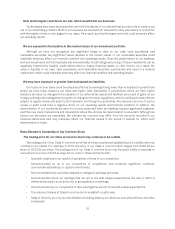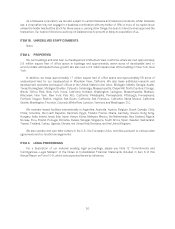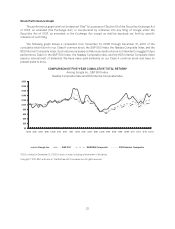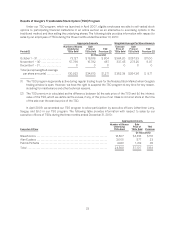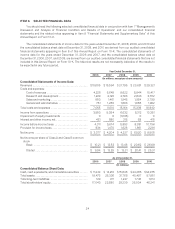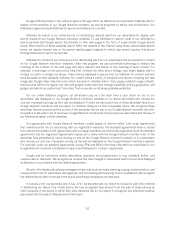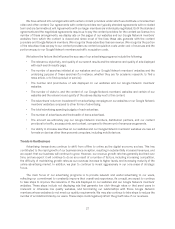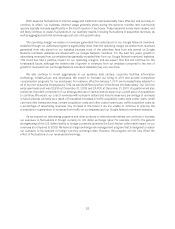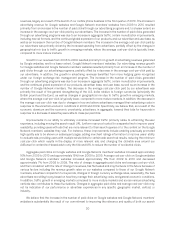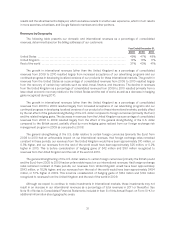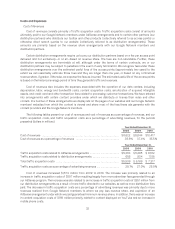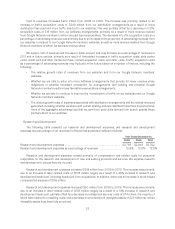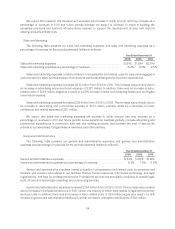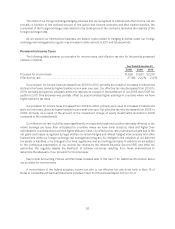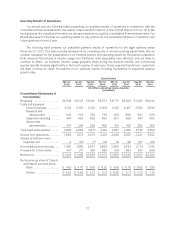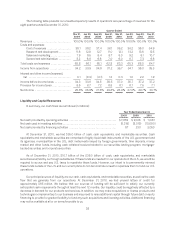Google 2010 Annual Report Download - page 41
Download and view the complete annual report
Please find page 41 of the 2010 Google annual report below. You can navigate through the pages in the report by either clicking on the pages listed below, or by using the keyword search tool below to find specific information within the annual report.Both seasonal fluctuations in internet usage and traditional retail seasonality have affected, and are likely to
continue to affect, our business. Internet usage generally slows during the summer months, and commercial
queries typically increase significantly in the fourth quarter of each year. These seasonal trends have caused, and
will likely continue to cause, fluctuations in our quarterly results, including fluctuations in sequential revenues, as
well as aggregate paid click and average cost-per-click growth rates.
The operating margin we realize on revenues generated from ads placed on our Google Network members’
websites through our AdSense program is significantly lower than the operating margin we realize from revenues
generated from ads placed on our websites because most of the advertiser fees from ads served on Google
Network members’ websites are shared with our Google Network members. For the past five years, growth in
advertising revenues from our websites has generally exceeded that from our Google Network members’ websites.
This trend has had a positive impact on our operating margins, and we expect that this will continue for the
foreseeable future, although the relative rate of growth in revenues from our websites compared to the rate of
growth in revenues from our Google Network members’ websites may vary over time.
We also continue to invest aggressively in our systems, data centers, corporate facilities, information
technology infrastructure, and employees. We expect to increase our hiring in 2011 and provide competitive
compensation programs for our employees. For instance, effective January 1, 2011, we increased base salaries for
all of our non-executive employees by 10%, as well as shifted a portion of the bonus into base salary. Our full-time
employee headcount was 19,835 at December 31, 2009 and 24,400 at December 31, 2010. Acquisitions will also
remain an important component of our strategy and use of capital, and we expect our current pace of acquisitions
to continue. We expect our cost of revenues will increase in dollars and may increase as a percentage of revenues
in future periods, primarily as a result of forecasted increases in traffic acquisition costs, data center costs, credit
card and other transaction fees, content acquisition costs, and other costs. In particular, traffic acquisition costs as
a percentage of advertising revenues may increase in the future if we are unable to continue to improve the
monetization or generation of revenues from traffic on our websites and our Google Network members’ websites.
As we expand our advertising programs and other products to international markets, we continue to increase
our exposure to fluctuations in foreign currency to U.S. dollar exchange rates. For example, in 2010, the general
strengthening of the U.S. dollar relative to foreign currencies (primarily the Euro) had an unfavorable impact on our
revenues as compared to 2009. We have a foreign exchange risk management program that is designed to reduce
our exposure to fluctuations in foreign currency exchange rates. However, this program will not fully offset the
effect of fluctuations on our revenues and earnings.
28


